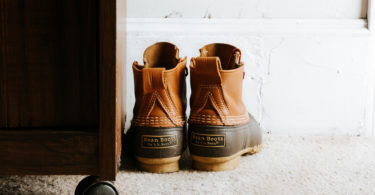Updated on 11/21/22 from an article originally published on 6/11/13.

Family photos represent decades of sentimental memories. From adorable baby photos and family portraits to candid shots that capture life’s important milestones, old photos help us hold these memories close and share them widely.
But if you’ve got years of photographs piled up at home, it can be hard to know exactly what to do with them. You can work some into your decor and tuck others away in albums for viewing on coffee tables. But what about the stashes of pictures you keep in shoe boxes and drawers? How can you store and organize them to preserve them and the memories they hold?
Not to mention that it would be devastating to lose these tangible reminders of our precious memories to wear and tear from being shuffled around or improperly organized. That’s why learning to store old photos is crucial to preserving and protecting them for years to come.
Related: The Ultimate Guide to Home Organization
Whether you need to save family photos or decide to move them to a storage unit, we’ve got you covered. As the ultimate guide to storing, organizing, and preserving old photos, we’ll cover everything you need to know about keeping your physical photos, photo albums, and digital images in order.
Click the links below to jump to each section:
Physical Photos
What is the best way to preserve old photographs?

First: Choosing the right storage conditions is essential to protecting prints, Polaroids, or any other types of physical photographs in your personal collection.
Here are the most important photo storage factors to consider:
- Ventilation – A well-ventilated area with circulating air combats mold growth on photos and prevents other organic substances from causing any damage.
- Temperature – Generally, it’s best to store physical photos in a cool room with a stable temperature. Storage temperatures above 75 degrees Fahrenheit can interfere with the chemicals used to process photos, which can cause discoloration.
- Moisture – Especially if you’re considering storing old photos in your basement or attic, be aware of any potential moisture that could reach the space. From potential flooding to humidity levels in the air, it’s best to keep physical photos away from any and all moisture if possible.
- Lighting – Light, and specifically sunlight, can cause photographs to fade. If you can’t enclose your prints completely, be sure that you are storing them in a dark place.
What is the best place to store old photos at home?

If you’ve got the space to spare, storing your family photographs, portraits, and other keepsakes at home has the benefit of easy access. But where exactly should you keep them, and is one room better for photo storage than another?
Here are some do’s and don’ts when it comes to storing old photographs at home:
DO: Store photos in closets, cabinets, or under the bed. As part of your living quarters, these locations are likely to be more climate-controlled than other areas of the home.
DON’T: Store photos in a basement, attic, or garage where temperatures and humidity constantly fluctuate with the change of seasons.
DO: Store photos off the ground when possible. Even if they’re stored in a plastic bin or tucked inside storage compartments, keeping your photos off the floor prevents potential damage from flooding.
DON’T: Store photos near a heating or cooling vent. The temperature will fluctuate as your air conditioning, or heat turns on and off, which could warp the photos and cause long-term damage.
Related: Simplifying Your Home: 5 Ways to Get Started
Can you store old photos in a storage unit?
If you just can’t compromise the space in your home for old photographs that you’re unlikely to pull out on a regular basis, keeping them tucked away safely in storage can be a great option.
Of course, it may require a trip to the storage unit when you want to access them, but you can reclaim the space in your linen closet or under the bed and sleep well at night knowing your photos are protected. Renting a storage unit with 24 hour access will make it even easier to view your photos whenever you’d like.
How to Store Old Photos in a Storage Unit: Do’s & Don’ts
Is tucking your prints away in storage the right option for you? Here are some do’s and don’ts when it comes to storing old photos in a storage unit:
DO: Pick a climate-controlled storage unit. Remember, 75 degrees or cooler and low humidity are the best conditions for photo storage.
DON’T: Place old photos on the ground in a storage unit, even if they are packaged up in boxes or plastic containers. Instead, consider using a wire rack or pallet to keep boxes off the ground in case of flooding.
DO: Enclose all photographs completely, whether in boxes, containers, or frames. This keeps them protected against moisture in the air, harsh lighting, direct exposure to sunlight, and other elements that could potentially be harmful.
Related: How to Pick the Best Storage Unit Size for Your Needs
How to Preserve Old Photos: Preparing Your Photos for Storage

When you decide to store physical photographs of any kind inside a storage unit, you’ll need to take some preventative measures first. For example, to preserve their condition, you’ll want to organize them inside plastic sleeves, envelopes, or photo storage boxes rather than just throwing them inside your storage unit and calling it a day.
What is the best kind of container to use for photo storage?
An ideal container for storing printed pictures would have a sealed, water-resistant exterior, such as plastic, and soft but stiff dividers to separate prints on the inside.
The preservation experts at the National Archives specifically recommend using materials made of cotton or pure wood pulps to avoid bringing your photos in contact with acids that can be hidden in other paper sources. They also suggest rolling larger, flexible prints into tubes and using polyester film sleeves for extra precaution.
Using these details as general guidance, use your imagination! You may use envelopes or file folders as your dividers and a plastic tote or file box to contain them. These are likely items you’ll have on hand and won’t have to go out and buy.
How to Store Old Photos in Boxes or Envelopes
Once you’ve chosen where to store your photos and what type of container you’ll use, it’s time to pack and organize them properly. Unfortunately, that means more preventative measures must be taken than simply placing them inside photo-safe boxes.
Whether you’re preparing to put your photos inside your storage unit or just tucking them inside your office closet, here are a few things to keep an eye on while you pack away photos for storage:
- Keep photos flat: Use stiff, flat materials, dividers, and containers to help your photos to stay flat. Piling them on top of each other in an unorganized manner can lead to bending and other permanent damage.
- Find the right fit: Especially if you’re purchasing new photo storage containers or making your own dividers, it’s important to ensure you’ve got the right fit. Cramming pictures, Polaroids, and prints into a box that’s too small in length or width is one of the easiest ways to damage and dogear them before they’ve even made it to storage.
- Don’t under or overfill boxes: Stuffing too many photos in one box can have the same effect as using a box that’s too small. On the flip side, leaving too much room in your photo storage box can cause items to shift around in transport. If you have extra space, fill it with non-acidic tissue paper that won’t damage your prints.
- Non-acidic dividers are helpful: If you’ve ever had to peel photos off one another, you already know it’s not fun. Although it might feel meticulous, placing a sheet of paper or another type of divider between photos is a good idea. This can save you a headache in the long run, especially if your photos overheat or come in contact with water.
Is it OK to store old photos in a shoe box?
Without a doubt, shoe boxes are one of the most common container types for storing old photos. And not for nothing, they’re the go-to option for a reason: You probably have some around, and their stiff, square shape lends itself well to laying photos flat and protecting them from the elements.
Storing your old photographs inside a shoe box isn’t the best practice, but it’s a suitable enough option if you’re looking for affordable photo storage. Just keep in mind that shoe boxes are not water-resistant. So while shoe boxes work well for organizing your photos, consider storing them in a separate water-resistant container for safekeeping. At the very least, try to keep your photo storage shoe boxes in a place where you know they’ll never come in contact with water under any circumstance.
Related: Self-Storage Tips for New Renters
Is it OK to store old photos in plastic bags?
Plastic bags are another incredibly common photo storage option, and it’s easy to see why: They’re cheap, easy to use, and easy to find at just about any grocery store.
But unlike shoe boxes, plastic bags are not a viable photo storage option, especially long-term. Not only are they clear, allowing for exposure to sunlight and other harsh lighting, but they’re also small and often flimsy. They can tear easily and aren’t likely to keep photos very well protected from harmful elements.
Simply put: If you’re currently keeping some of your favorite family photos in plastic bags, it’s time to find a better storage solution as soon as possible.
Photo Albums
How to Store Old Photo Albums & Scrapbooks
Regarding photo storage best practices, photo albums, scrapbooks, and binders full of printed photos are an entirely different beast for various reasons. They tend to be bulkier and take up more space in general. They also introduce new elements to consider, including the album’s exterior materials, specific binding type, interior plastic sleeves, and more.
Whether you’re an avid scrapbooker or have just inherited your family’s keepsake photo albums, here are a few tips for optimal photo album storage:

- Use albums with acid-free sleeves, sheet protectors, or photo corners: If you can easily transfer photos from an existing album or start from scratch, choosing the right materials for your photo album can improve your preservation efforts. When shopping, look for materials like polyester, polypropylene, or polyethylene.
- Choose the album itself carefully: Avoid textiles that might be appealing to moths and other cloth-eating pests. Leather is your best bet on albums that will last and store well
- Avoid adhesives: Acids that can deteriorate the quality of printed photos hide in adhesives. Instead, opt for clear plastic photo sleeves that won’t damage photos or subject them to additional materials.
- Flat and well-fitting applies here, too: Make sure photographs have been inserted into sleeves or corner tabs that fit their size and are positioned so they will stay flat. The less your photos are bent or jostled around inside the photo album, the better.
- Don’t overstuff your photo album: This tip is more for preserving the album’s quality rather than the photos. If maintaining the album’s quality is important to you, overstuffing can cause damage to the spine of the album or cause pages to weaken and fall out over time.
- Store albums within larger containers, free of chemicals: Wrap your albums in tissue paper before placing them in boxes for an added level of protection.
Where is the best place to store photo albums?
When it comes to storing photo albums, many of the same rules apply. At home, you’ll want to find a safe, dry room with stable temperatures and humidity levels. Extra closets and spare bedrooms work great, while garages and basements should generally be avoided.
Related: Reclaim Your Closets: 17 Brilliant Hall Closet Organization Ideas
Photo albums can also be safely stored in self-storage units, so long as the necessary precautions are taken beforehand. As with physical photos, keep your photo albums and scrapbooks packed closely together in plastic or water-resistant boxes or totes for safekeeping.
Digital Photos
How to Preserve Old Photos Digitally

Even after taking the necessary steps and precautions to preserve your physical photos in storage, it never hurts to make digital copies as well. Sure, physical photographs hold their own kind of sentimental value, but these digital copies can serve as backups in case the originals are damaged or lost.
If you’ve never tried to make digital copies of physical photographs before, it can be hard to know where to start. The process may seem daunting at first, but in reality, the best way to back up old photos digitally depends entirely on your preferences and what you plan to do with the photos once their digital counterparts are created.
For example, if your primary motivation for backing up old photos is just to preserve the memories held in them, taking a picture of the physical photo with a digital camera or smartphone camera can be a surprisingly simple option. It’s easy, and the quality serves the purpose.
On the other hand, let’s say you intend to reproduce a photo from the digital copy you create. Maybe you want to create a holiday card that will be sent out to your loved ones or create your own family photo album one day. In that case, you’ll want to consider using a scanner or a photo scanning service to improve the digital photo’s overall quality.
Your digital copies can stay on a computer, but for added backup, it is recommended that you save them on a CD, memory stick, or external USB drive. And for safekeeping, those items should also be stored safely in a water-free area of your home or storage unit.
Where is the best place to store photos online?
If you don’t have enough computer storage space or don’t want to confine your photos to a single computer or USB drive, you can also upload your photos to “the cloud” or a number of different photo storage websites. That way, if anything happens to your personal computer, laptop, or USB drive, you can quickly restore and recover all of the photos you took the time to digitize.
A few popular digital photo storage options include:
- Apple iCloud
- Amazon Photos
- Dropbox
- Google Photos / Google Drive
- Shutterfly
Many of these digital photo storage options are available for free or at a relatively affordable monthly rate. For a full breakdown of cloud storage options, pricing, and more, check out Consumer Report’s article: Best Cloud Storage Services for Photos
Storing Old Photos Means Preserving Precious Memories
Whether you need to organize decades worth of printed photographs or want to find the best way to preserve your childhood photo albums, keeping your photos protected is priority number one. Hopefully, this guide helped teach you everything you need to know!
And remember: If you’ve got a large collection of physical photos or old photo albums you’d like to preserve in storage, consider working with the professionals. Life Storage offers convenient climate-controlled storage units in major cities and metro areas throughout the country. Find affordable monthly storage rentals near you today!
Have any additional tips for preserving old print photographs? Please share them with us on social media!







